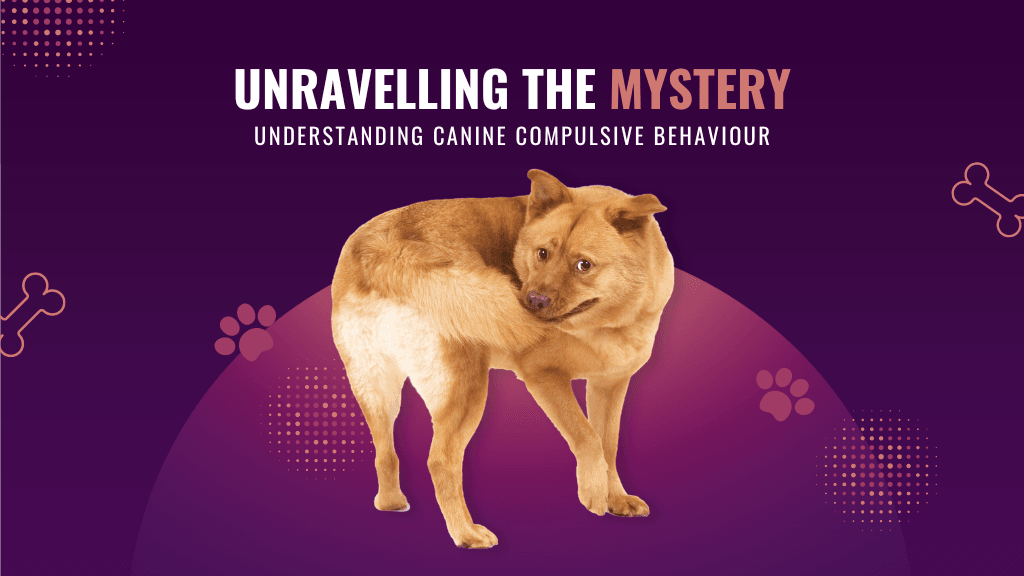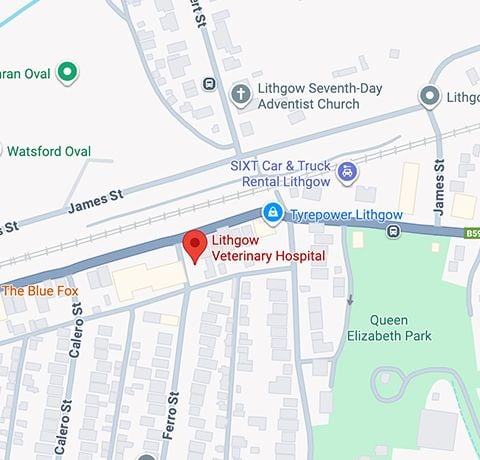Unravelling the Mystery: Understanding Canine Compulsive Disorder
)
What is Canine Compulsive Disorder?
Canine compulsive disorder, akin to human obsessive-compulsive disorder, leads dogs to engage in repetitive behaviours that can be detrimental to their wellbeing. While it's challenging to ascertain if dogs experience obsessive thoughts, their actions clearly indicate compulsive tendencies. These behaviours, while common in mentally healthy dogs to some extent, escalate to a disruptive level in dogs with canine compulsive disorder, impacting both their own quality of life and that of their families.
Symptoms of Canine Compulsive Disorder (CCD) in dogs often involve behaviours that, in moderation, might seem commonplace. However, dogs with CCD take these actions to extremes, resulting in potential harm to themselves. Common compulsive behaviours seen in dogs with CCD include:
- Signs of self mutilation - missing hair, raw skin, focus is commonly on the tail, forelimbs, and distal extremities
- The dog’s behaviour intensifies over time and cannot be interrupted even with physical restraint, increases in frequency or duration, and interferes with normal functioning
- Frequent tail chasing, especially if the tail tip is missing (however, not all dogs that tail chase will mutilate their tails)
- May be seen in young dogs, but onset is more common during social maturity; playfulness decreases with age, OCD increases.
- A solitary focus may have seemed to spur the behaviour (for example, chasing a mouse that the patient could not catch) - but usually no direct cause is evident
- May see self-induced injuries and lack of condition that may be associated with increased motor activity and repetitive behaviours
- Behaviour worsens with time
What Causes Canine Compulsive Disorder (CCD)?
Pain: Chronic pain stemming from past injuries or medical conditions can drive dogs to exhibit obsessive behaviours. Dogs may compulsively gnaw at affected areas or display anxious rituals before activities that induce discomfort. Even after resolving the underlying issue, compulsive behaviours may persist, emphasising the importance of identifying triggers early for effective intervention.
Social and Environmental Stressors: Conflicts in the home or disruptions to a dog's routine can contribute to canine OCD. Dogs thrive on consistency and may develop anxious behaviours in response to changes in their environment. Minor disruptions like daily departures for work can trigger separation anxiety, leading to coping mechanisms. Traumatic events, such as car accidents, may result in post-traumatic stress disorder (PTSD) and subsequent compulsive behaviours.
Ensuring proper stimulation through a balanced routine of exercise, socialisation, and alone time is crucial. Over or under-stimulation can provoke compulsive behaviours and anxiety. For instance, herding breeds may exhibit tail spinning due to insufficient outlets for their energy.
The Genetic Component: While ongoing research explores the genetic basis of canine OCD, experts note consistency in symptoms within breeds. Certain breeds exhibit specific compulsive behaviours, indicating a genetic predisposition. For example, Doberman pinschers commonly suffer from acral lick dermatitis and flank sucking, while Cavalier King Charles Spaniels are known for fly snapping and shadow chasing. Some breeds may also have a predisposition for behavioural issues like separation anxiety, further triggering OCD in dogs.
Diagnosing Canine Compulsive Disorder (CCD) in dogs begins with a thorough examination at the veterinary clinic, primarily aimed at ruling out other potential medical causes. Symptoms associated with CCD can overlap with various other health issues. For instance, excessive licking and chewing of the skin, particularly on the feet and joints, may indicate allergies, infections, or joint inflammation. Similarly, behaviours like compulsive circling, fly chasing, and inappropriate eating can sometimes signal neurological disorders such as Cushing’s disease, canine cognitive disorder, or even brain tumours.
Furthermore, circling and pacing behaviours might stem from liver disorders, especially if accompanied by the dog pressing their head against hard surfaces. It's important to note that head pressing is not a typical symptom of CCD and typically denotes severe distress in your pet.To arrive at a definitive diagnosis, a comprehensive approach is adopted, including a physical examination, blood tests, and imaging assessments. These diagnostic tools help differentiate between CCD and other underlying medical conditions, ensuring accurate treatment and management strategies for your pet's wellbeing.
Treating Canine Compulsive Disorder (CCD) in dogs typically involves a multifaceted approach aimed at managing the behaviours and addressing underlying stress triggers. Unlike typical behaviour problems, scolding or punishing the dog for their compulsive behaviours is counterproductive, as these behaviours are often rooted in stress and anxiety.
To effectively manage CCD, focus on using destressing and distracting techniques. Ensure your dog receives adequate exercise tailored to their breed and health condition to reduce nervous tension that may trigger obsessive behaviour. Mental stimulation is also key to reinforcing positive behaviours. Engage your dog with puzzle toys, food-based toys, or create stimulating games at home by hiding treats or toys for them to find. Training exercises not only stimulate their minds but also provide them with a sense of purpose, which many dogs crave.
When your dog displays compulsive behaviours, distract them with alternative activities. Avoid using food as a distraction, as this may inadvertently reinforce the behaviour. Instead, utilise puzzle toys or training techniques to redirect their focus away from their compulsion.
In severe cases of CCD, medication may be necessary to alleviate compulsive urges and improve quality of life. Antidepressant medications are sometimes prescribed for CCD management, although they may take several weeks to show effects and require consistent daily administration to remain effective.
It's essential to work closely with our vet team to develop a tailored treatment plan for your dog, combining behavioural interventions with medication if needed. With patience, consistency, and the right approach, many dogs with CCD can lead happy, fulfilling lives.
| Tags:DogClient InformationProactive Pet CarePet Behaviour |
&geometry(132x120))





